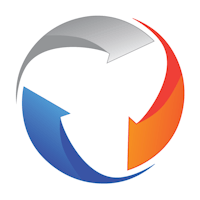The advancements in technology are reshaping how we teach and learn, bringing new opportunities and challenges. To address such challenges, a concerted effort must be made to ensure that newer technologies are implemented thoughtfully and responsibly, with a focus on enhancing the educational experience for all students. Collaboration and open dialogue are key as we navigate this terrain, ensuring innovation meets the needs of today's educational institutions.
In almost every collaboration or discussion around what educators, schools and institutions need from their educational technology, three themes rise to the surface:
- The need for a trusted, interoperable and flexible edtech ecosystem.
- The growing reliance on data and analytics to help build that ecosystem.
- The exploration of generative AI’s role in that ecosystem.
Ecosystem Evolution
When building up edtech resources for any learning environment, whether it be a K-12 school district, institution of higher education or professional development, there is a lot to consider. Before acquiring a new edtech system, tool or app, technology leaders need to consider privacy and security concerns. How will the technology work with other tools? Will it make life easier for already overwhelmed educators, or is it just one more item on their to-do list? Is it accessible to all learners? Does it align with the curriculum? When the needs of the institution change, will it be easy and affordable to make those changes?
Of course, following interoperability standards can help ensure the entire system works together and makes it faster, cheaper and easier to make future changes or additions to the ecosystem.
Open rubrics from the 1EdTech community can help start the vetting process on data privacy, security, accessibility and generative AI, while CASE Network 2 helps to align those tools with academic standards.
The ecosystem as a whole is making a major impact. There are initiatives to increase personalized learning and equity across districts and states, technology management solutions to lift some of the burdens from both technology departments and educators, and strategies to empower educators to use new technology, to name a few.
Data and Analytics
Technology is becoming increasingly important in education, but budgets remain limited. While only a little more than half of higher education institutions expect IT budgets to increase, the increase is only about two percent. In comparison, 48 percent of higher education institutions expect budgets to stay the same or decrease, according to Gartner’s higher education predictions for 2024. That means data and analytics will be crucial to helping select the right tools for each learning environment and proving their effectiveness.
1EdTech members are already using interoperability standards to see how their tools are being used, support student success and assess course impacts, but there is more to do.
Learning Tools Interoperability (LTI), OneRoster and Edu-API allow for the secure flow of data between various tools and systems, while the Caliper Analytics standard makes that data more accessible and easier to analyze. Members are working to break down silos across institutions and increase data insights and analysis to benefit teaching and learning in their institutions.
A coalition of leading institutions is also championing LTI Advantage Data to provide real-time information covering progress within courses, assessment results and product usage.
Generative AI
Finally, there is no question that generative AI is causing excitement, confusion and anxiety, but it does have the potential to improve teaching and learning if done right. Everyone has a different understanding and ability to start implementing AI in their ecosystems.
The 1EdTech community already started establishing guidance and tools to help with the TrustEd Apps Generative AI Data Rubric and the AI Preparedness Checklist, and the conversation will continue with members discussing how they are implementing these tools, as well as practice prompts for educators.
In the end, these three themes boil down to one thing: We need to build an ecosystem that works best for all educators and supports learners. That’s why it’s so important to bring everyone together, including educators from both K-12 and higher education, edtech suppliers, non-profits and government organizations, to ensure the solutions we build benefit all.
These conversations and the work will continue at 1EdTech’s 2024 Learning Impact Conference, June 3-6 in Salt Lake City, Utah. Educators and edtech innovators will discuss how they’re addressing these issues, what works and what doesn’t, and consider where we need to go next.



